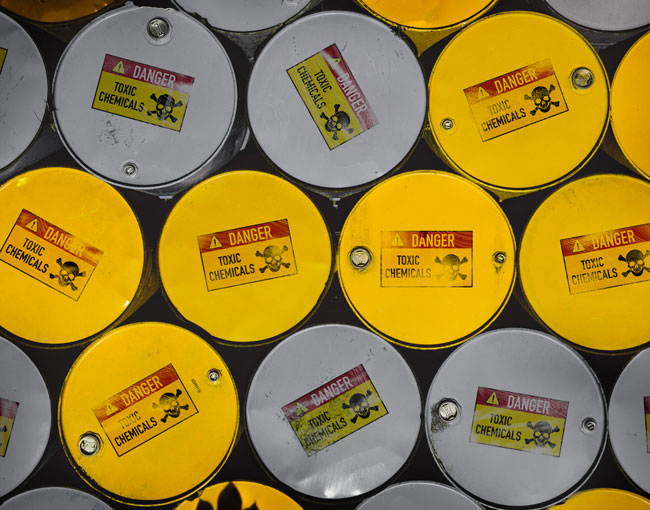Home > Insights > Publications > EPA continues to advance aggressive PFAS strategy with new RCRA rulemakings
The EPA continues its push to regulate and reduce PFAS, short for per- and polyfluoroalkyl substances, in the United States. Its latest proposed action, if adopted, will significantly impact the regulated community.
On October 26, EPA announced its intent to initiate two rulemakings to propose adding PFOA, PFOS, PFBS and GenX as RCRA hazardous constituents and to clarify its authority, under the RCRA Corrective Action Program, to require investigation and cleanup of emerging contaminants such as PFAS. These rulemakings would pave the way to allow EPA to designate PFAS as listed “hazardous wastes.”
PFAS have been used in a variety of household and commercial products including non-stick cookware, stain- and water-resistant textiles, food packaging, carpeting, and fire-fighting foams. PFAS have been detected across the United States in surface water, groundwater, soil and the air and are commonly known as “forever chemicals” due to their persistence in the environment and failure to break down over time. Because of their presence in a wide variety of household items, PFAS easily make their way into water systems and waste streams.
Designating PFAS as listed “hazardous waste” would greatly increase the costs associated with managing and disposing of PFAS wastes and could significantly impact landfills, water treatment facilities and publicly and privately owned wastewater treatment plants. These impacts, and their associated costs, are also likely to be felt by industrial and commercial dischargers and waste generators regardless of their use (or non-use) of PFAS. Listing PFAS as RCRA “hazardous wastes” would also mean that PFAS would be considered “hazardous substances” under the Superfund (CERCLA) cleanup program.
The EPA also recently proposed two other significant actions relating to PFAS. First, the EPA announced that it would require manufacturers of PFAS to perform testing and provide information on certain categories of PFAS pursuant to its authority under the Toxic Substances Control Act (TSCA). Second, the EPA published a final human health toxicity assessment for GenX chemicals. Human Health Toxicity Assessments for GenX Chemicals | US EPA. The toxicity assessment provides hazard identification, dose-response information, and oral reference doses (RfDs) for chronic and subchronic exposures of GenX as a key step toward development of a national drinking water health advisory. EPA previously published toxicity assessments for PFOS, PFOA and PFBS; however, the new reference dose adopted for GenX (0.000003 mg/kg-day) is significantly lower than its 2018 assessment for GenX and its assessments for PFOA, PFOS and PFBS.
These proposed rulemakings and actions are just the latest in a series of actions recently undertaken by the EPA to address PFAS. Just last week, the EPA released its PFAS Strategic Roadmap (“Roadmap”), which sets out the Agency’s comprehensive plan for tackling PFAS contamination. The EPA has touted its Roadmap as a “whole-of-EPA strategy to protect public health and the environment from the impacts of PFAS.”
The Roadmap is organized around three central focus areas:
- Investing in research to improve current knowledge and understanding of exposure routes, toxicity, impacts on human health and the environment, and treatment technologies;
- Preventing the release of PFAS to the environment; and
- Expanding and accelerating investigation and cleanup of PFAS contamination
To further its strategy, the EPA has assigned specific tasks to its internal offices and has established timelines to guide action. For example, the Roadmap tasks the Office of Chemical Safety and Pollution Prevention with proposing a rulemaking to remove exemptions and exclusions to enhance PFAS reporting under the Toxic Release Inventory (winter 2022) and directs the Office of Water to restrict PFAS discharges from industrial sources through Effluent Limitations Guidelines (winter 2022). Other significant actions proposed in the Roadmap include the following:
- Draft a proposed rule setting enforceable drinking water limits for PFAS under the Safe Drinking Water Act (Office of Water—expected fall 2022)
- Leverage NPDES permitting to reduce PFAS discharges to waterways and obtain comprehensive information on sources and quantities of PFAS discharged through monitoring (Office of Water—expected winter 2022)
- Draft a proposed rule designating PFAS as hazardous substances under CERCLA (Office of Land and Emergency Management—expected spring 2022)
- Develop technical foundation to address PFAS air emissions, including identification of sources, monitoring approaches and mitigation technologies (Office of Air and Radiation—expected fall 2022 and ongoing)
- Use enforcement tools to better identify and address PFAS releases and require action by responsible parties to prevent and address contamination (ongoing)
Given the aggressive regulatory action proposed to be taken by EPA with respect to PFAS, companies engaged in waste management activities must now consider and address the implications such actions will have on their operations. Manufacturers, retailers, industrial dischargers, waste management companies and others who work with or manage PFAS, materials or products containing PFAS, or wastes likely to contain PFAS should expect and be prepared to adapt to additional requirements over the next several years.
If you have questions regarding this article or the regulation of PFAS discussed herein, please contact Sara Chamberlain in Thompson Coburn’s environmental practice area.

